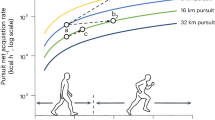Abstract
THE commercial poultry keeper, faced with an J. acute shortage of concentrate feeding stuffs, has been compelled to exercise considerable ingenuity in finding suitable supplements to eke out his food allocation and so maintain a reasonable proportion of his pre-war numbers of stock. The same problem, although to a lesser degree, has confronted the domestic poultry keeper, who is allocated sufficient meal to furnish approximately half the daily food requirements of his birds. Thus a person qualifying for rations for only four birds requires an additional half-pound of dry food substance in order to provide a satisfactory daily ration for this number of stock. It is estimated1 that the daily amount of edible waste in the average small English household is approximately one pound of fresh substance, or approximately four ounces of dry matter. The further daily requirement of four ounces of palatable and nutritive dry matter must, therefore, be derived from other sources. The poultry Press, adopting the principle that no potential food source, however small in quantity relative to needs, should be despised, has frequently suggested the nutritive possibilities of natural food materials and requested youth movements and other voluntary services to collect acorns, horse chestnuts and beech mast for stock feed.
This is a preview of subscription content, access via your institution
Access options
Subscribe to this journal
Receive 51 print issues and online access
$199.00 per year
only $3.90 per issue
Buy this article
- Purchase on Springer Link
- Instant access to full article PDF
Prices may be subject to local taxes which are calculated during checkout
Similar content being viewed by others
References
Agricultural Research in Great Britain, 1943, p. 83. H. M. Stationery Office.
Temperton, H., Emp. J. Exp. Agric. (in the press).
Woodman, H. E., "The Composition and Nutritive Value of Feeding Stuffs", Bull. 124. Ministry of Agriculture.
Klimmer, M., "Scientific Feeding of the Domestic Animals" (London: Baillière, Tindall and Cox, 1923).
Temperton, H. Unpublished data.
Author information
Authors and Affiliations
Rights and permissions
About this article
Cite this article
TEMPERTON, H. FEEDING HORSE CHESTNUTS AND ELDERBERRIES TO POULTRY. Nature 152, 345–346 (1943). https://doi.org/10.1038/152345a0
Issue Date:
DOI: https://doi.org/10.1038/152345a0
This article is cited by
-
VALUE OF HORSE CHESTNUTS AS FOOD FOR PIGS
Nature (1943)
Comments
By submitting a comment you agree to abide by our Terms and Community Guidelines. If you find something abusive or that does not comply with our terms or guidelines please flag it as inappropriate.



